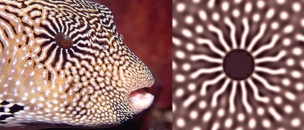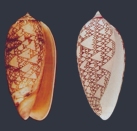It may seem that global epidemics, Alzheimer’s disease and leopard coat patterns have little in common. However, each phenomenon can be mathematically thought of as a diffusive process. Epidemics such as SARS have transport of millions across the airline transport as the mechanism that allows for an outbreak in Hong Kong to quickly cause an outbreak in New York. Alzheimer’s Disease is thought to be caused by misfolded proteins moving across the white matter of the brain. Leopard coat patterns are caused by molecules moving throughout the animal and reacting with each other yielding brilliant results known as Turing patterns. To understand, predict, and ultimately control these varied phenomena and more, we must pay considerable attention to the underlying diffusion process.
In 1905, Albert Einstein showed how Brownian motion, or the random walk of particles, could be used to derive the diffusion equation.
Whilst this equation might look confounding for some, it simply says that the change in time of the concentration of some substance u at a point in space x and time t is just equal to rate of change over space of that substance. The parameter D is simply the speed of diffusion. As an example if we drop some red dye into a beaker of water, we can model the spread of the dye through the whole beaker with this equation. With this equation, Einstein could determine the size of an atom or the molecular weight of a gas. This equation is quite important and it has been widely used over the last 100 years.
Now let us contemplate what would happen if we have two different substances diffusing at different speeds that could react with each other. This is exactly what British mathematician Alan Turing considered in the early 1950’s. He showed that the solution to such an equation governing these dynamics, known as the reaction-diffusion equation, yields a myriad of patterns that mirrored much in nature. These patterns are today known as Turing Patterns.

 On the left in both pictures, we see some brilliant patterns on a fish and shell respectively and on the right the solutions to the reaction diffusion equation showing a near perfect match. Today, reaction-diffusion equations are used to model ecological invasions, tumor growth and wound healing.
On the left in both pictures, we see some brilliant patterns on a fish and shell respectively and on the right the solutions to the reaction diffusion equation showing a near perfect match. Today, reaction-diffusion equations are used to model ecological invasions, tumor growth and wound healing.
If we think back to our previous thought experiment of dropping dye in water and before we add the dye, we place a sponge inside the beaker, would there be any difference in the spread of the dye? Does the fractal-like structure of a sponge affect the diffusion of the food dye? The answer is a resounding yes and leads to anomalous diffusion where the second moment of the diffusive process, i.e. the right-hand side of the above equation, is related non-linearly, or disproportionately, to time. This has drastic effects and significantly increases the difficulty of the problem. Diffusion in the complex medium of the earth or the brain, i.e. groundwater diffusion and spread of molecules respectively, shows this characteristic behaviour and it is only been in recent years we have made significant progress to modeling these problems.
In all examples mentioned so far, the underlying process is local in space. A molecule of red food dye can’t simply jump from one side of a beaker to another. However, what if there was some network structure that allowed such jumps. This is clearly the case when considering the global airline transport network. Within 24 hours, I can be on the other side of the world. This non-local process significantly complicates the diffusion equation but careful consideration of it is clearly needed when trying to control outbreaks of influenza or perhaps even Ebola.
My research on anomalous reaction diffusion on networks is at the junction of these three examples. It is my aim to understand, predict, and ultimately control such phenomena mathematically and to help in the development of real tools for practitioners to do the same in the wider world.
Isaac Donnelly
PhD Candidate, School of Mathematics and Statistics
